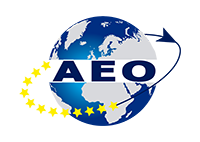Top 5 Ways to Avoid Costly Importing Mistakes
International trade offers a world of opportunities for businesses seeking to expand their reach and diversify their product offerings. However, venturing into the world of importing can be a complex and challenging endeavor, with numerous potential pitfalls that can result in costly mistakes. From regulatory compliance to supply chain disruptions, there are several factors to consider. In this blog post, we'll explore the top five ways to steer clear of these expensive importing blunders and ensure a successful and cost-effective importing process.
Top 5 Ways to Avoid Costly Importing Mistakes
International trade offers a world of opportunities for businesses seeking to expand their reach and diversify their product offerings. However, venturing into the world of importing can be a complex and challenging endeavor, with numerous potential pitfalls that can result in costly mistakes. From regulatory compliance to supply chain disruptions, there are several factors to consider. In this blog post, we'll explore the top five ways to steer clear of these expensive importing blunders and ensure a successful and cost-effective importing process.
1. Comprehensive Research and Supplier Vetting
One of the fundamental steps in successful importing is finding reliable and trustworthy suppliers. Many costly mistakes stem from a lack of due diligence when choosing suppliers. To avoid these errors:
- Conduct thorough research on potential suppliers, checking their reputation, history, and customer reviews.
- Seek references and testimonials from other businesses that have worked with the supplier.
- Consider visiting the supplier's facilities in person, if possible, to assess their capabilities and quality control.
- By investing time and effort into supplier selection, you can reduce the risk of issues like product defects, shipping delays, and unexpected costs.
2. Understand Import Regulations and Compliance
Navigating the intricate web of import regulations and customs compliance is crucial to avoiding costly mistakes. Failure to comply with these regulations can lead to shipment delays, fines, and even confiscation of your goods. To stay compliant:
- Work with experienced customs brokers or import specialists who can guide you through the regulatory landscape.
- Stay updated on changes in import regulations, particularly those related to trade agreements and tariffs.
- Maintain meticulous records and documentation to ensure you meet all compliance requirements.
3. Develop a Robust Supply Chain Strategy
Supply chain disruptions can be major contributors to costly importing mistakes. Events like natural disasters, labor strikes, and geopolitical tensions can lead to shipping delays, increased expenses, and revenue losses. To mitigate these risks:
- Diversify your supplier base to reduce dependence on a single source.
- Consider alternative transportation routes and carriers to bypass potential bottlenecks.
- Establish clear lines of communication with suppliers and logistics partners to swiftly address any disruptions and implement contingency plans.
4. Accurate Cost Estimations and Budgeting
Importing often comes with hidden costs that can catch businesses off guard if not properly accounted for. These costs may include customs duties, taxes, transportation fees, warehousing expenses, and compliance-related expenditures. To prevent financial surprises:
- Develop a comprehensive budget that includes all potential costs associated with importing.
- Research and calculate estimated import duties and taxes accurately.
- Be prepared for currency exchange rate fluctuations, as they can impact your budget.
5. Continuous Monitoring and Risk Assessment
Importing is an ongoing process that requires vigilant monitoring and risk assessment. To avoid costly mistakes in the long run:
- Continuously evaluate and optimize your supply chain for efficiency and cost-effectiveness.
- Stay informed about global events and market trends that may affect your imports.
- Regularly review your compliance practices to ensure they align with current regulations.
- In conclusion, importing can be a lucrative endeavor, but it's not without its challenges and potential pitfalls. Costly importing mistakes can disrupt your operations and erode your bottom line. By conducting thorough research and vetting of suppliers, understanding import regulations, developing a resilient supply chain strategy, accurate cost estimations and budgeting, and maintaining continuous monitoring and risk assessment practices, you can significantly reduce the risk of these mistakes. Importing requires careful planning, attention to detail, and a proactive approach to ensure a successful and profitable venture in the global marketplace. Don't leave the fate of your imports to chance; take control of your importing process and secure a prosperous future for your business.




